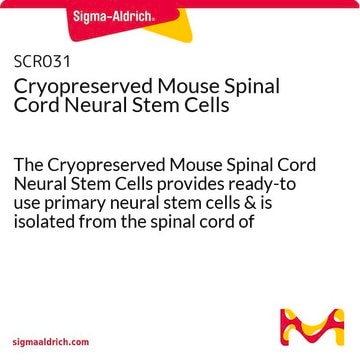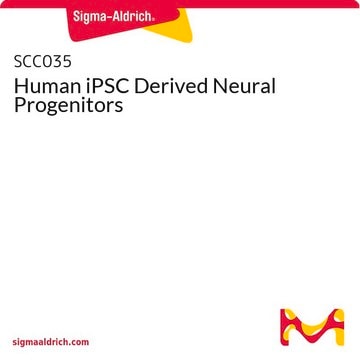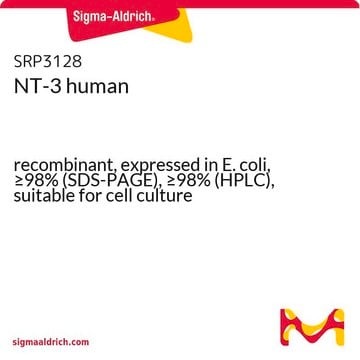SCR029
Cryopreserved Mouse Cortical Neural Stem Cells
The Cryopreserved Mouse Cortical Neural Stem Cells provides ready-to use primary neural stem cells isolated from the cortices of embryonic day 15-18 (E15-E18) C57/BL6 mice.
Synonym(s):
Cortical Stem Cells, Mouse Neural Stem Cells
About This Item
Recommended Products
biological source
mouse
Quality Level
manufacturer/tradename
Chemicon®
technique(s)
cell culture | stem cell: suitable
input
sample type neural stem cell(s)
shipped in
liquid nitrogen
General description
We recommend that Millipore′s Cryopreserved Mouse Cortical Neural Stem Cells (Catalog No. SCR029) be used in conjunction with the Neural Stem Cell Marker Characterization Kit (Catalog No. SCR019) and differentiation assays that demonstrate multipotentiality of the starting cell population.
For Research Use Only; not for use in diagnostic procedure.
Cell Line Description
Application
Stem Cell Research
Packaging
Components
Storage and Stability
Legal Information
Disclaimer
Storage Class Code
12 - Non Combustible Liquids
WGK
WGK 1
Flash Point(F)
Not applicable
Flash Point(C)
Not applicable
Certificates of Analysis (COA)
Search for Certificates of Analysis (COA) by entering the products Lot/Batch Number. Lot and Batch Numbers can be found on a product’s label following the words ‘Lot’ or ‘Batch’.
Already Own This Product?
Find documentation for the products that you have recently purchased in the Document Library.
Protocols
Step-by-step culture protocols for neural stem cell culture including NSC isolation, expansion, differentiation and characterization.
Step-by-step culture protocols for neural stem cell culture including NSC isolation, expansion, differentiation and characterization.
Step-by-step culture protocols for neural stem cell culture including NSC isolation, expansion, differentiation and characterization.
Step-by-step culture protocols for neural stem cell culture including NSC isolation, expansion, differentiation and characterization.
Our team of scientists has experience in all areas of research including Life Science, Material Science, Chemical Synthesis, Chromatography, Analytical and many others.
Contact Technical Service







